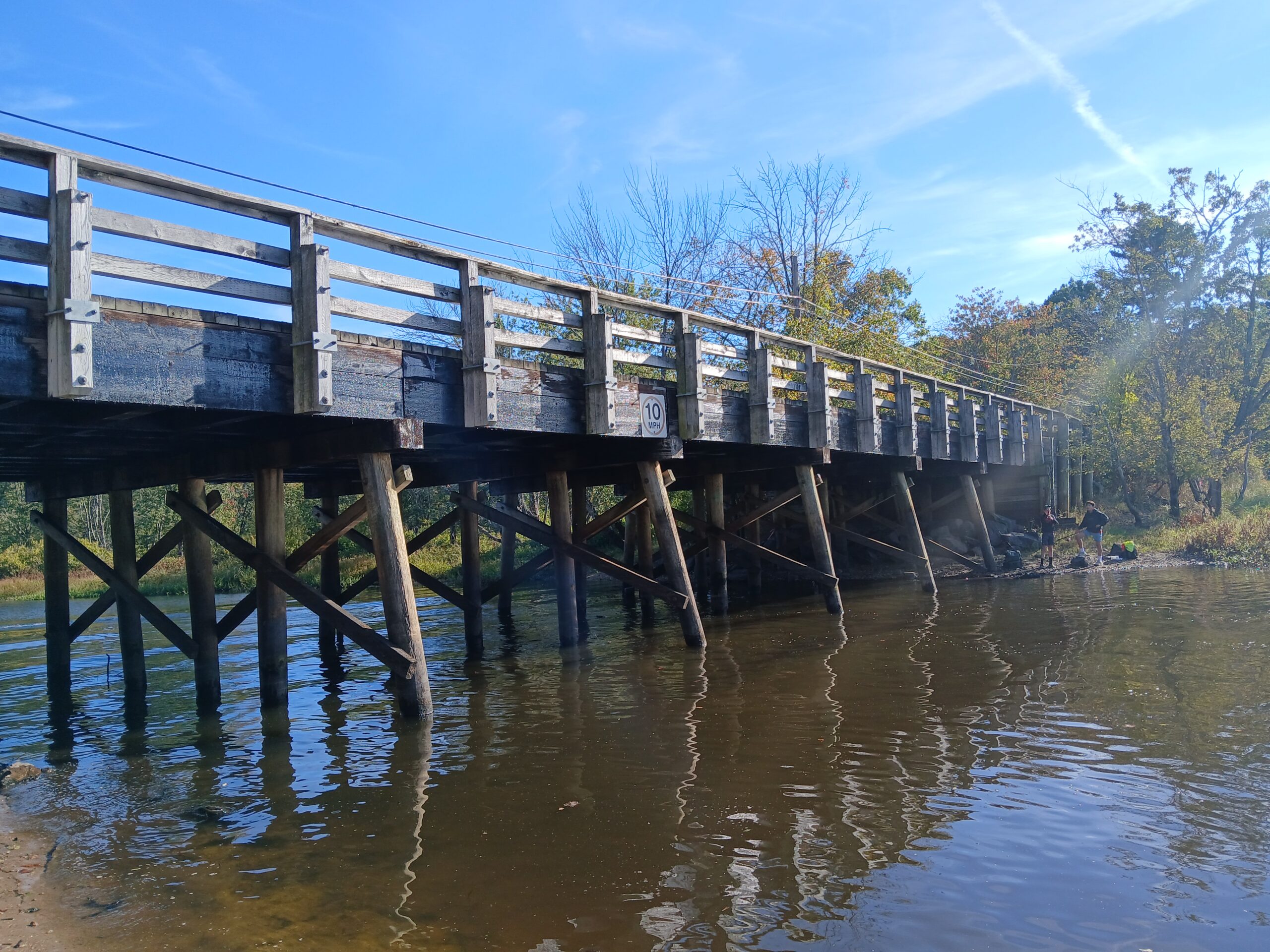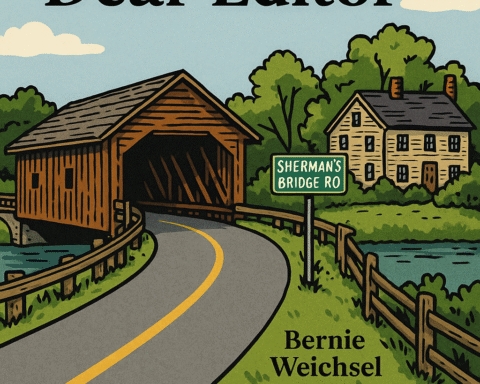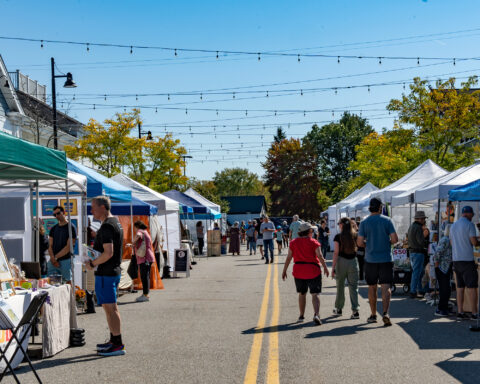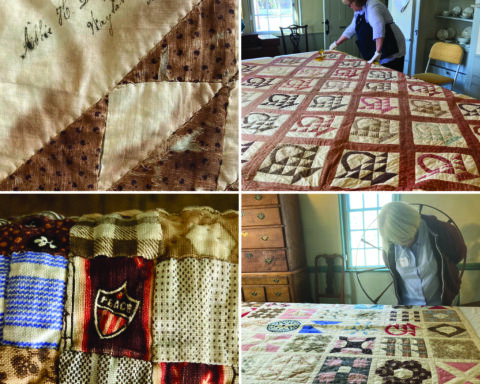An October 9 joint public visioning session for Wayland and Sudbury residents was held to discuss a proposal to rehabilitate the historic wooden Sherman’s Bridge, first built around 1743 (see tinyurl.com/shermans-bridge). Over 50 residents attended the Sudbury event, with 22 speakers and an additional 13 emails from residents not in attendance were read.
While no one questioned the need to repair the noisy and loose decking, a debate circled around whether repairs should prioritize safe vehicle travel, easy maintenance and state standards or neighborhood shared space, as well as concerns about changing a residential road into a faster municipal connector road as a commuter shortcut.
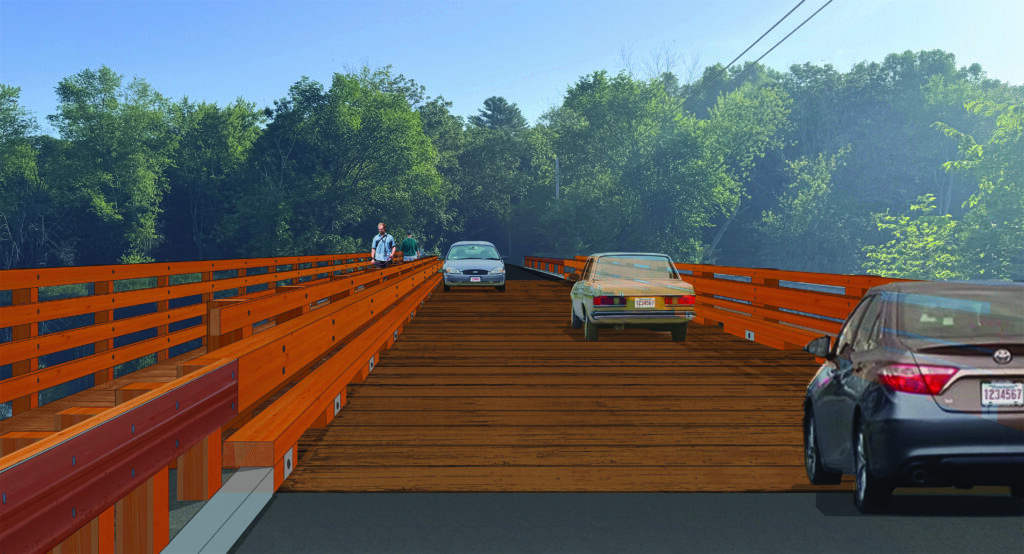
“Sherman’s Bridge is an iconic, historic wooden structure that defines an entire neighborhood,” said resident Jeff Stein. “On almost any day, you can see someone photographing, painting, fishing off the bridge, putting boats in the water. The dark night sky is a wondrous thing from the middle of Sherman’s bridge. Sherman’s Bridge is a place — remember that.”
Sherman’s Bridge Road heading west from Wayland’s north abutment crosses the Sudbury River and becomes Lincoln Road on the Sudbury side. The bridge also crosses property owned by the U.S. Fish & Wildlife-managed Great Meadows National Wildlife Refuge.
Jointly owned by both towns, the bridge was last rebuilt in 1992 but has required increasingly frequent repairs. Several issues now compromise the bridge’s safety: the deck’s many wooden plank boards can no longer be securely fastened by bolts to the stringers running underneath, some diagonal cross bracing has become loose, and one of the supporting piles has some underwater rotting. Each piling is rated for loads of 30 tons or more and a 50-year freshwater lifetime.
While still safe to travel on, Wayland Public Works Director Tom Holder said MassDOT now classifies the bridge deck as in “severe” condition and has warned the towns that if repairs are not made within a year, they will close it.
The bridge would be completely closed during repairs, which are scheduled to take three to six months and could start in summer or fall 2026 once funding and permits are in place.
TEC, Inc. project engineer Michael Ricciardi outlined a conceptual plan to replace the bridge’s deteriorated timber decking with glulam timber planks (engineered laminated wood beams which are stronger than wood alone) covered by a waterproof asphalt surface. The plan also calls for crash-tested glulam timber railings and new steel approach guardrails painted in neutral colors to blend with the surrounding natural area.
The asphalt coating would double the bridge’s service life from 20 years to 40, protect the underlying wood from moisture, and allow the addition of catch basins and outlet structures to prevent runoff from entering the Sudbury River, Ricciardi said. “Currently, debris and road salt can pass directly through [gaps in] the bridge deck,” Rivard said., noting that basins and outlet structures prevent salt-laden runoff from entering the Sudbury River. Prior to the state’s assistance offer, Sudbury and Wayland were expecting to split the repair cost of $1.6 million. MassDOT has offered to contribute roughly $1 million in materials ($325,000) and labor, including the glulam decking and railings, and provide its on-call bridge contractor to install them. Remaining costs, mainly substructure work and approach railings, would be split evenly between the towns. Holder said the project’s goal is rehabilitation, not replacement, emphasizing that the current stringers, timber beams and piers will remain.
Worries about safety
Residents closest to the bridge raised quality-of-life concerns. Tom Cooper said the loud clatter of vehicles “shakes the house” and favored any plan that reduces noise. Dennis Mortimer wrote that “we frequently hear the revving of vehicle engines as they leave the wooden bridge and accelerate… I dread any alteration that would encourage continuous speeding from both directions.”
“We can’t afford to pass up state funding,” Rebecca Devine said, noting the town’s other upcoming infrastructure costs. She also urged wider sidewalks for pedestrians and a dual rather than single walkway without an inner guardrail.
In an email read by Holder, Mark Goldberg described the uneven planks as “dangerous for cyclists, citing crashes, broken spokes, and damage to carbon frames. “It’s an accident waiting to happen,” he wrote. “Please don’t wait for a fatality.”
But nearby homeowners and longtime users of the bridge argued that paving would destroy its rural character and encourage more speeding. Bernie Weichsel and others referred to the existing deck as “a natural speed hump” and said a paved surface will only increase vehicle speeds and endanger bikers, fishermen, pedestrians and bird watchers.
Since both roads have curves approaching the bridge that naturally limit speed and the new railings would visually narrow the roadway, Kevin Dandrade, a traffic engineer from TEC inc, said he thought speeds would actually moderate slightly. A smoother surface, whether wooden or asphalt, would make the ride quieter and more comfortable but would not substantially change vehicle speed because geometry, not deck texture, controls speed, he said.
Dandrade reported that the traffic study found the bridge carries about 1,987 vehicles per day, with average speeds of 29–31mph on the approaches based on traffic counts from November 2024. The results showed about 1,253 vehicles travel northeast toward Wayland and 734 travel toward Sudbury daily.
Dandrade defended “responsible engineering” — ensuring the bridge meets modern safety, traffic and environmental standards while also respecting its setting. Crash-tested bridge rails keep vehicles from going off the sides, but some later worried that raised pedestrian curb railings could pose a problem for birders, fishermen and astronomy buffs crossing side to side on the bridge.
Roy MacDowell suggested a design change to cantilever the sidewalk from the proposed four-foot width back to five feet to meet ADA requirements.
Wayland resident and avid fisherman Tom Largy warned against any changes that could limit access to the public boat launch. “If the Sherman’s Bridge launch site went away, it would be a disastrous blow to public access to the Sudbury River,” he said.
River Stewardship Council representative Tom Sciacca noted that the river is protected under the 1968 federal Wild and Scenic Rivers Act. He cautioned that asphalt and painted steel may conflict with the river’s designated “scenic, historic or recreational” values and also questioned what substances might leach out of glulam.
To achieve a natural-looking appearance, Holder explained the project team is researching a “stamped asphalt” or “imprint technology” that can be applied to the asphalt so it resembles timber grain planks and said he had used the technique successfully in Framingham and Wayland.
Several speakers including Elizabeth Carter urged a 15mph speed limit and use of weight-limit signs to deter heavy trucks, worrying that their weight was speeding the deterioration of the bridge.
Resident Kurt Tramposch thought that the glulam deck would be susceptible to delamination and failure under prolonged submersion, saying the bridge was submerged during floods in 1968, 1987 and 2010.
Sudbury Historical Commission chair Christopher Hagger said his board will review the plans once formal drawings are submitted. “The question for us is whether the proposed design will still convey the sense of history associated with this crossing,” he said.
As the meeting concluded, residents pressed officials for another public input session to see the revised design. Holder pledged to “put out a message on next steps” but stopped short of committing to another forum.
The Sherman’s Bridge rehabilitation remains in the design phase, with permitting needed from 12 different authorities (six local, four state and two federal).


